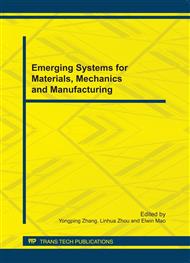p.485
p.489
p.494
p.499
p.504
p.509
p.517
p.523
p.528
Numerical Analysis for the Multi-Point Stretch Forming Process of Aircraft Skin Panel
Abstract:
Multi-point stretch forming (MPSF) is a new technique to form aircraft outer skin panel. Since multi-point die is composed by the discrete punches, the result of the MPSF aircraft outer skin panel need to study in depth. The thickness of elastic cushion and free length are two important factors to affect the accuracy, and they must be chosen reasonably. A series of numerical simulations on typical MPSF processes were carried out to an aircraft outer skin panel part. The results show that the thicker the elastic cushion is, the more valid the dimple will be suppressed .The longer free length is, the smaller the equivalent strain and thinning and more uniform the distribution of thickness will be. When the free length is shorter, the degree of effect is relatively obvious on the equivalent strain and thinning and the distribution of thickness; when the free length is longer than a certain value, the degree of effect is small.
Info:
Periodical:
Pages:
504-508
Citation:
Online since:
October 2011
Authors:
Keywords:
Price:
Сopyright:
© 2012 Trans Tech Publications Ltd. All Rights Reserved
Share:
Citation:


